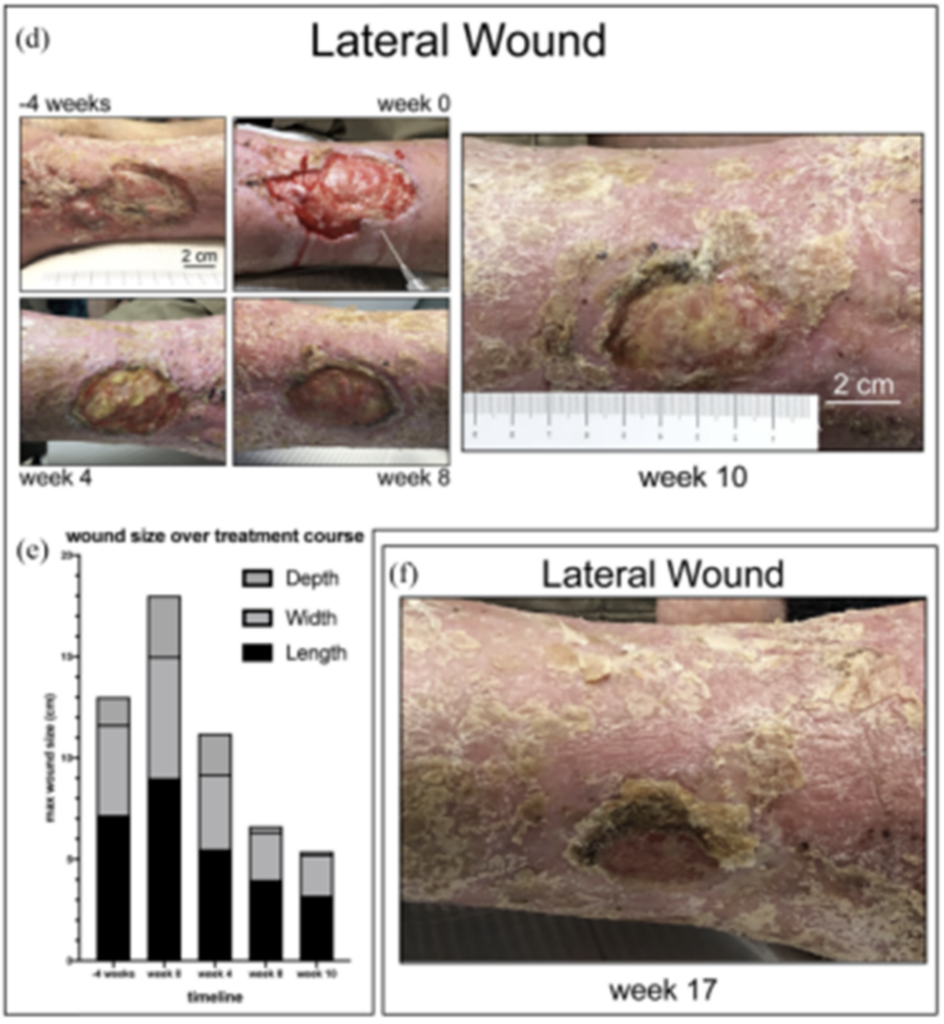What are venous leg ulcers?
Venous leg ulcers (VLU) are chronic wounds that occur when veins in your lower legs aren’t working correctly to push blood back up to your heart. This causes blood to pool in the veins, leading to high pressure and damage to the skin. At Merakris, we are pioneering cutting-edge regenerative therapeutics to effectively treat these painful chronic conditions.
Who gets venous leg ulcers?
It is estimated that 1%-3% of the US population in the U.S. develops VLUs. The increase in obesity and the aging population is predicted to exponentially increase the prevalence of chronic wounds, including VLU.
VLUs are the most widespread among the different types of leg ulcers. They most commonly occur in older adults as well as people who are overweight or have a history of leg injuries or blood clots. This demographic matches the high-risk patient population Merakris looks to treat with advanced regenerative therapies.
The Merakris Difference
Merakris’s lead therapeutic candidate is Dermacyte Amniotic Wound Care Liquid*. This first-in-class treatment uses an injectable human amniotic fluid allograft to stimulate healing in non-responsive VLUs.
Early pre-clinical data demonstrates that Dermacyte has the potential to fully close wounds in patients for whom standard therapies have failed.

Wound healing safety and efficacy of Dermacyte Liquid was reported with commercial background therapy, Dermacyte® Matrix, and the patient was a Medicare beneficiary.
Ditmars FS, Lind RA, Broderick TC, Fagg WS. Safety and efficacy of acellular human amniotic fluid and membrane in the treatment of non-healing wounds in a patient with chronic venous insufficiency. SAGE Open Med Case Rep. 2022 May 21;10:2050313X221100882. doi: 10.1177/2050313X221100882. PMID: 35619749; PMCID: PMC9128050.
Will my venous leg ulcer heal on its own?
Unfortunately not. 60% of the ulcers that are formed progress to chronic wounds that fail to heal. In those patients where the wounds eventually heal, it often takes many months, leaving patients in pain with a high chance of reoccurrence.
Leaving a VLU untreated is risky, as the open wound provides an entry point for bacteria. IYou may need strong antibiotics or surgery to remove damaged tissue if an ulcer gets infected. Over time, untreated ulcers can spread deeper and wider. This increases your chance of needing an amputation later on.
Getting effective treatment
It’s crucial to see a wound care specialist and get treatment for venous leg ulcers. They can assess your veins and blood flow and create a customized treatment plan.
Standard treatment options include
- Compression therapy to reduce pressure in veins.
- Special wound dressings
- Ointments.
- Lifestyle changes
- Medications
- Medical procedures
Dermacyte Amniotic Wound Care Liquid* is a new cutting-edge regenerative medicine approach to healing unhealed venous leg ulcers. The therapeutic is currently undergoing Phase II clinical trials. Promising early data signals Dermacyte Amniotic Wound Care Liquid*s potential to achieve outcomes that patients are desperately seeking.
*Dermacyte® Liquid is an investigational new drug and has not been approved for marketing by the US FDA